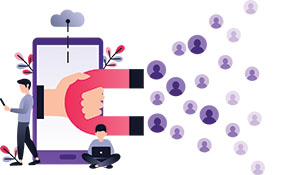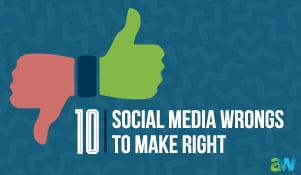 All the press on Millennials, characteristics, buying habits, work etchic, etc., begs the question: are all Millennials the same? Instead of lumping a whole generation together under a few choice character traits, marketers should delve deeper into these research-based subgroups. Understanding your audience is key to realizing the best way to reach them. All research and subdivisions are from the experts at the Ypulse Mashup Conference, but the insight is my own.
All the press on Millennials, characteristics, buying habits, work etchic, etc., begs the question: are all Millennials the same? Instead of lumping a whole generation together under a few choice character traits, marketers should delve deeper into these research-based subgroups. Understanding your audience is key to realizing the best way to reach them. All research and subdivisions are from the experts at the Ypulse Mashup Conference, but the insight is my own.
The Muted Millennials (28% of all Millennials)
“The largest and youngest group of Millennials have been the hardest hit by the recession and can’t recall what life was like before economic tough times. They are cautious, closed off, and reserved when it comes to expressing their points of view, preferring to stay under the radar. Contrary to the 'all Millennials are obsessed with fame and fortune' stereotype, this group is attention-shy, with only nine percent believing that becoming famous is important. They play by the rules and are risk adverse. Working hard is important to them, but they haven’t found their dream job — instead most are working in 'just a job.' They value a closed/close group of friends and care about family but are less gung-ho about making the world a better place than other segments. (Only 66 percent want to do so.)"
What it means for marketers:
These are the toughest group to market to. They’re likely poor students and, therefore, conservative when it comes to their money. You need to convince them why your product is a good investment in their future. They are the intern slaves, the multi-taskers, and the worn-down from their busy schedules. By the time their workday is over, they’re exhausted. Give them easy, free ways to contribute to your cause instead of demanding time and effort.
Moralist Middles (23% of all Millennials)
“The second largest group of Millennials skew female (58 percent), embrace traditional values, are more religious (53 percent go to church), and have a high respect for the law. They tend to live in the middle of the country (and enjoy country music) and want to live close to home. They also have the highest levels of college debt, which they are struggling to pay back. They crave long-term stability and want to get married. Many are parents already, but they are not interested in owning a lot of stuff (because they have too much debt).”
What it means:
These are the moral and financial conservatives, the God-Squad of the generation. They’re committed to wholesome values and put family first. They can be reached by tugging at their heartstrings with non-controversial topics. Focus on community involvement, and you’ll create loyal customers for life.
The Supremes (20% of all Millennials)
“Next up are the Supremes — young (58 percent under 21), privileged and high achieving. This group cares a lot about what others think and staying on top of the latest trends. They are counting on formal education to help them succeed and are very much about academic achievement. They love pop music, new tech and are very brand-centric. They also like to be in relationships.”
What it means:
If this generation were a high school clique, this group would be the popular kids. They’re concerned with self-image and always want to be the first to discover the hottest new songs/shows/trends. They need advertisements that are interactive, cool, and on the cutting edge of technology. They expect to be courted by marketers and love to see their favorite celebrities endorsing products. They love free swag and giveaways. Their loyalty may be flimsy, however, constantly upgrading from new to newer.
Alt Idealists (18% of all Millennials)
“The Alt Idealists are the most cause-oriented segment. They are also 'terminally unique,' bucking traditional milestones like marriage and kids while forging their own path. They are urban, the least close to their families, live with roommates, and prefer to make versus buy. They see themselves as creative with their own style and don’t care about being rich or famous — they just want to be independent.”
What it means:
The hipsters of this generation make up their own minds about advertising. They’re a tricky group to target because they make up a wide range of opinions (read: everything but the popular one). You can be sure that they’ll stand for something though. They’re passionate about the environment, health, and volunteer work. They’re usually creative, too, so look to them to contribute user-generated content.
Beta Dogs (11% of all Millennials)
“This group skews male and Hispanic (44 percent). They are all about making and spending money (they WANT to be rich and famous), but they don’t want to work too hard. They like to party (40 percent of those 25 – 31 binge drink) and care about looking good. They are also more likely to be married and skew a bit older. They are the most open to advertising.”
What it means:
They want to be on top but don’t want to work to get there. Most advertising appeals to them because they’ll hop on the “brand-wagon” for anything that will make them popular. Anything goes here.









Leave a comment